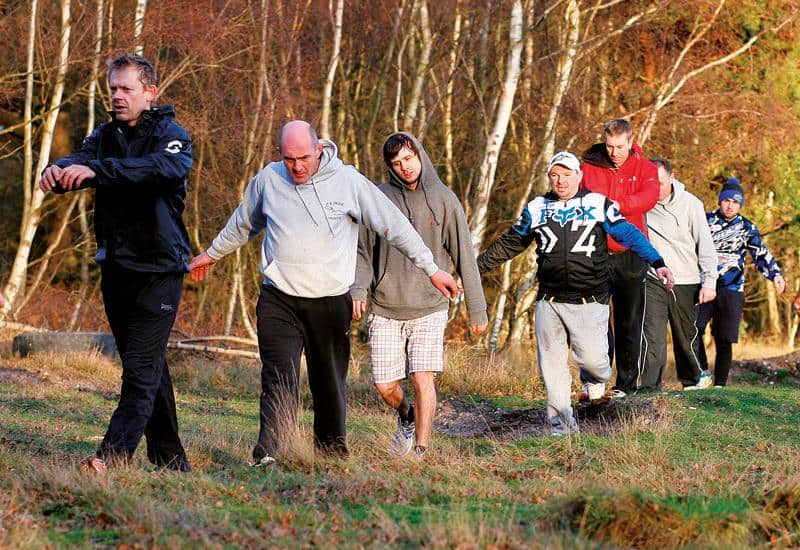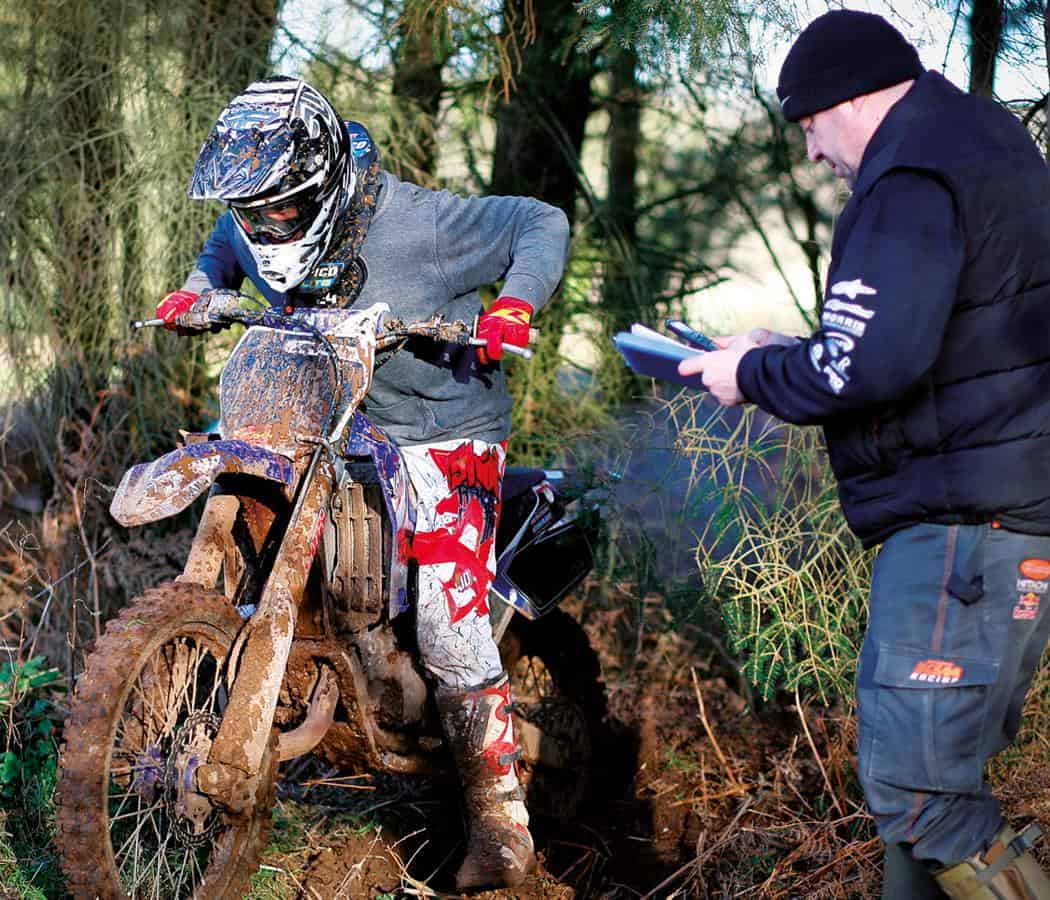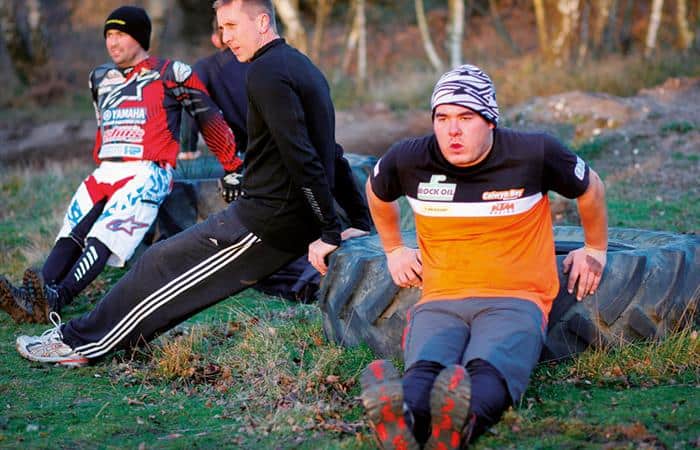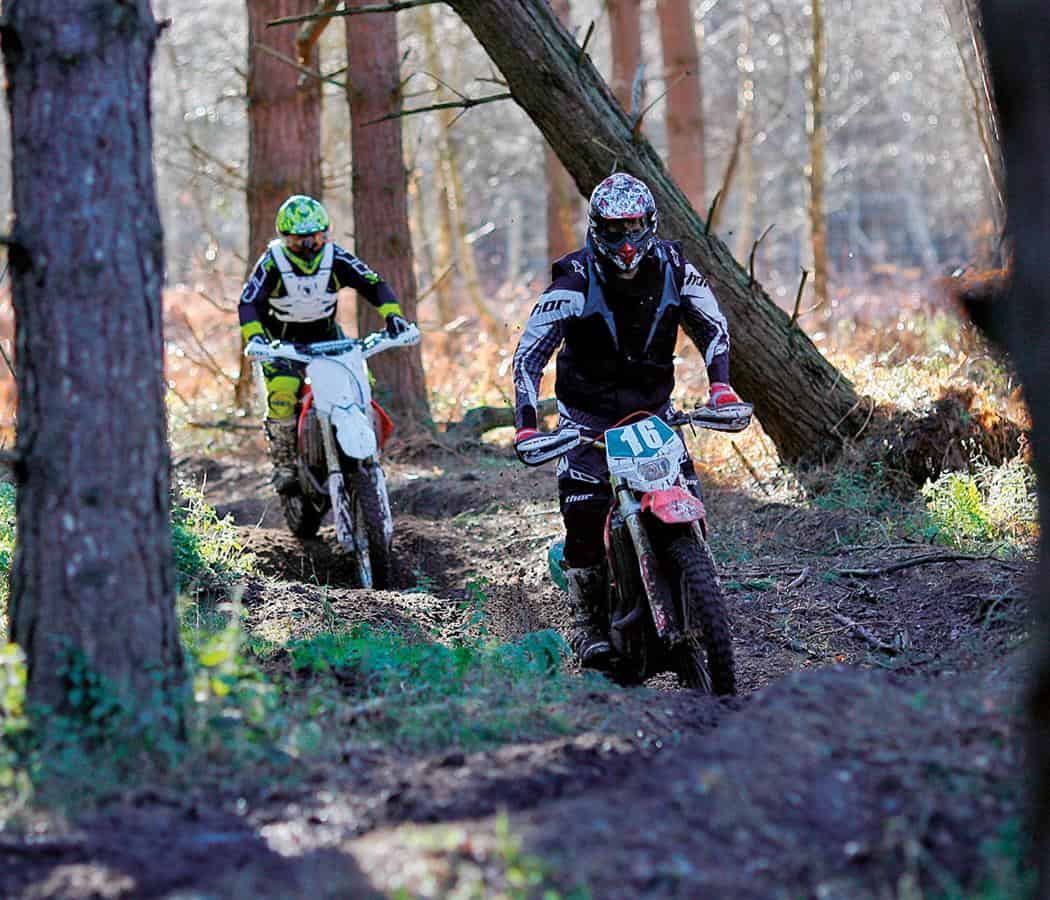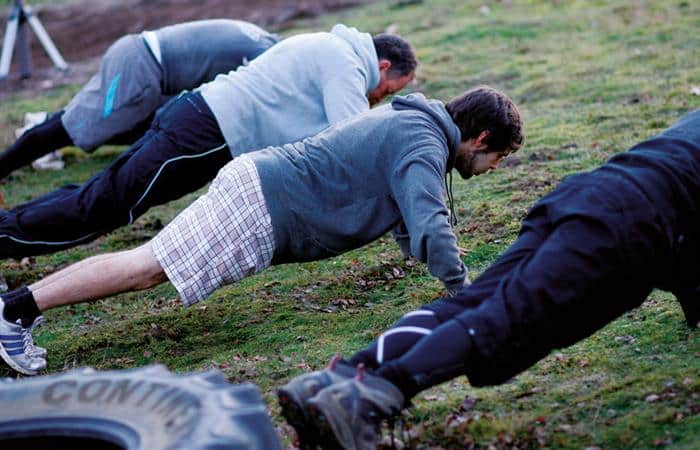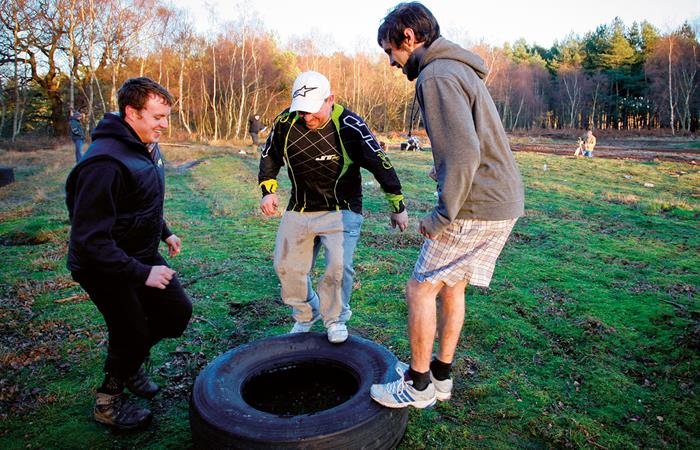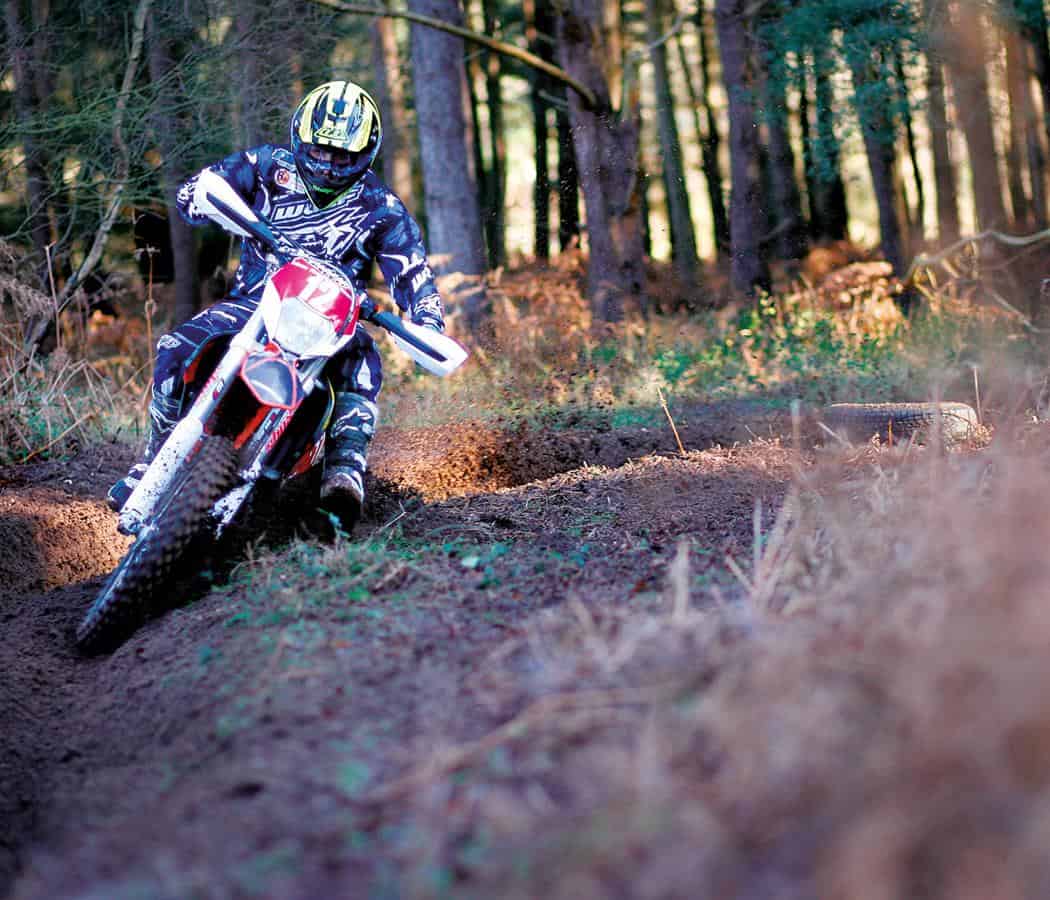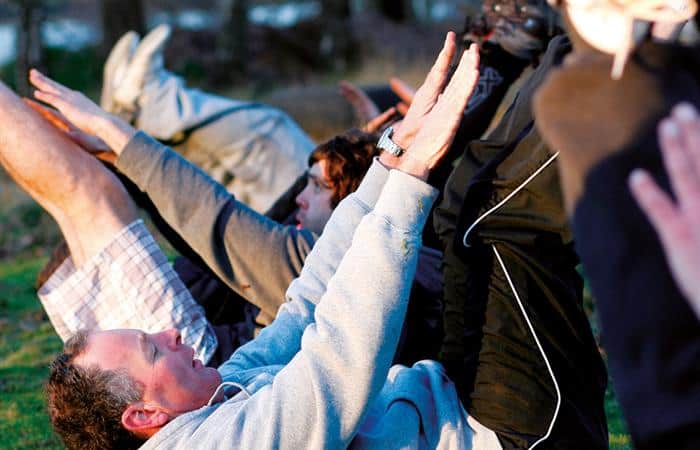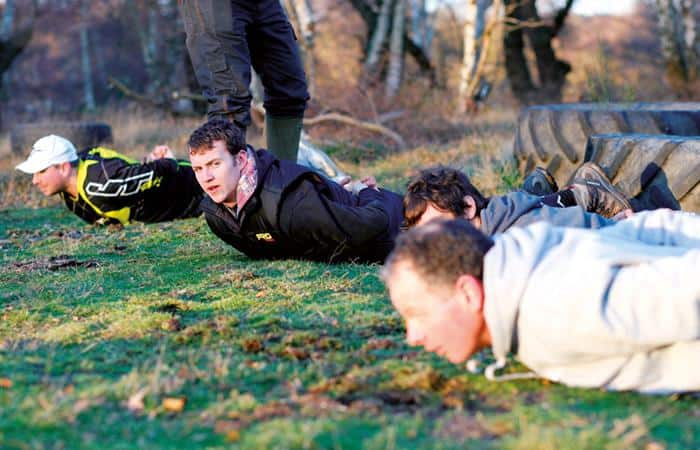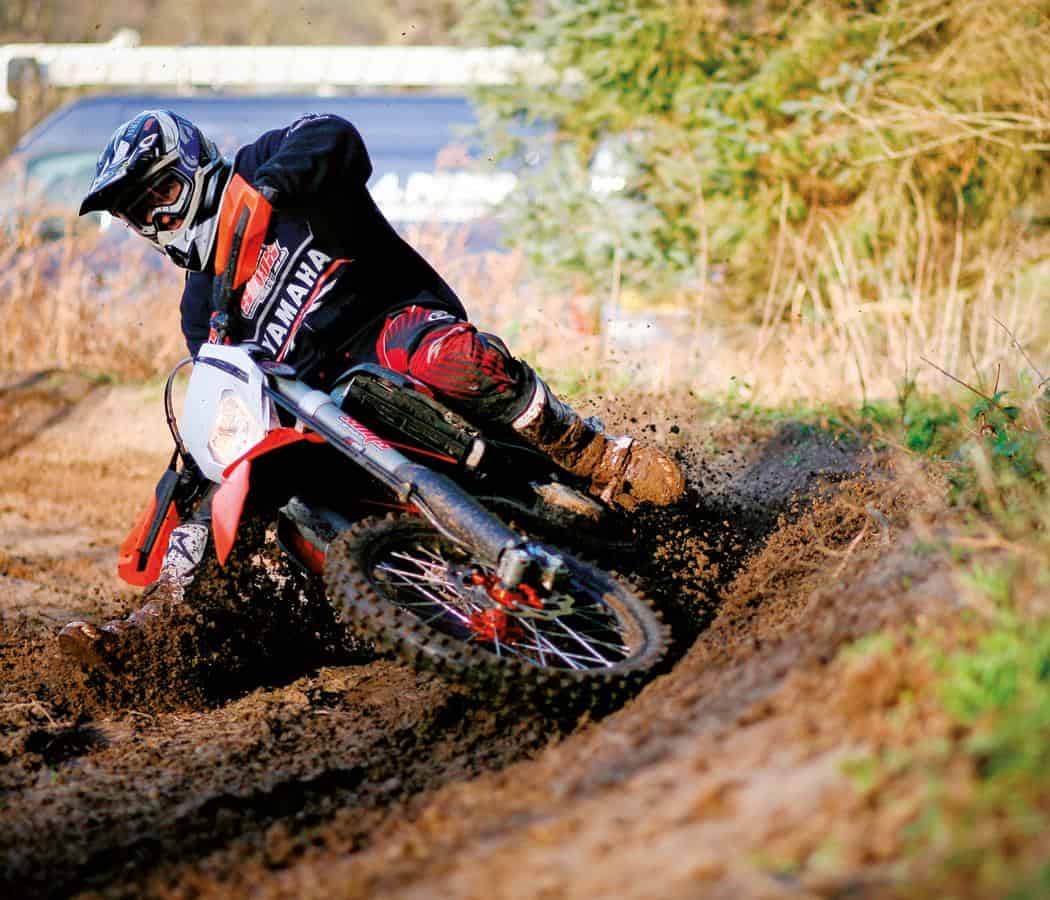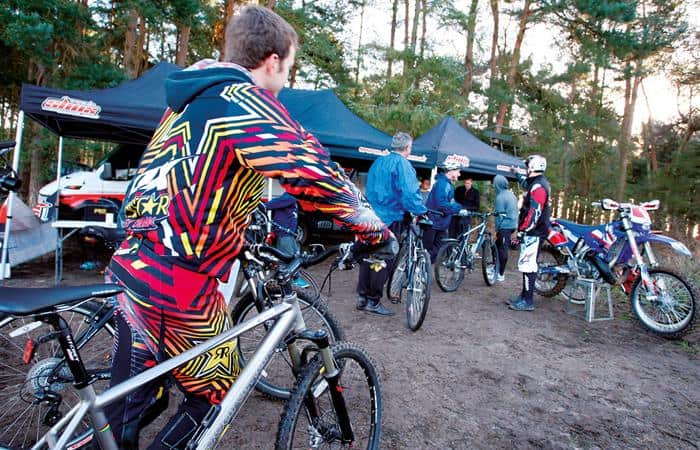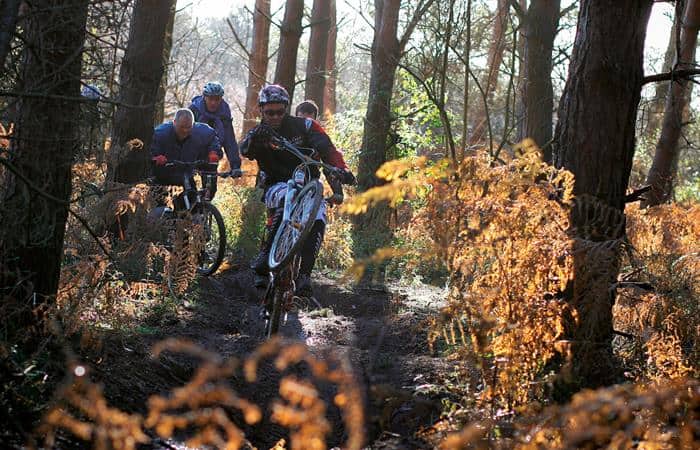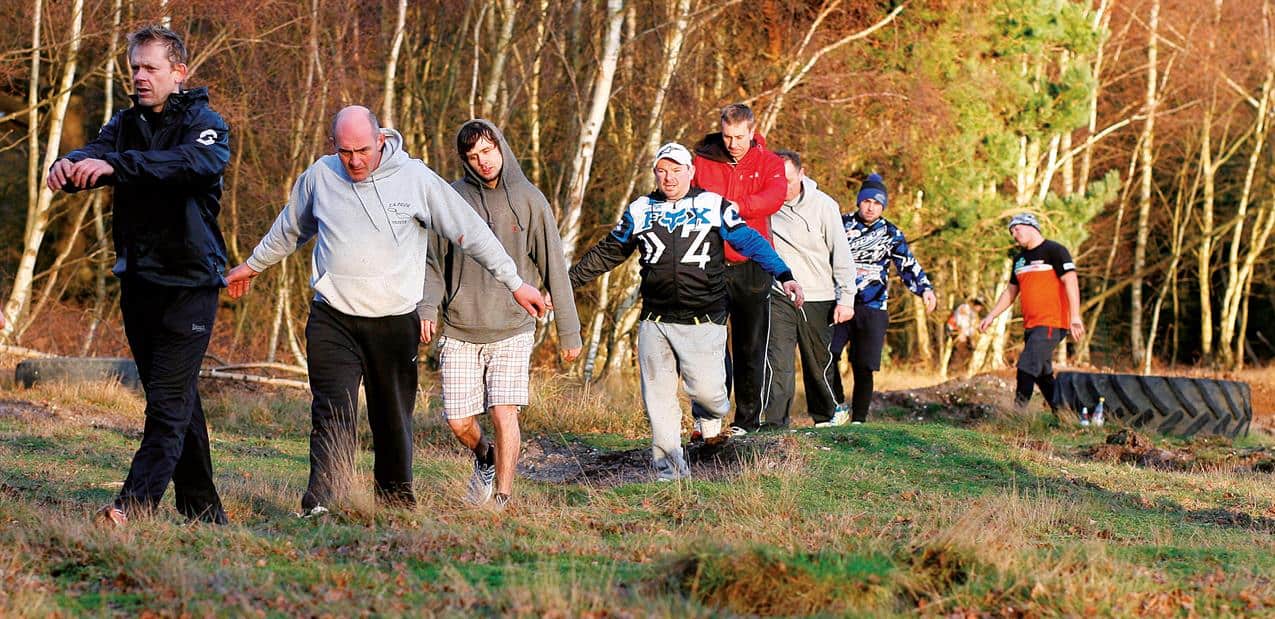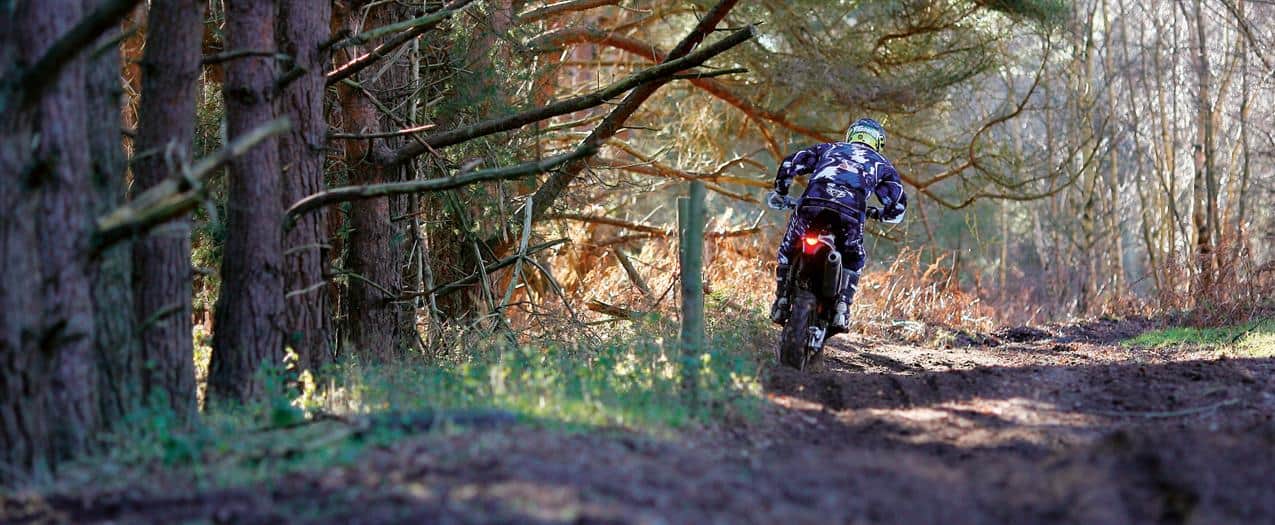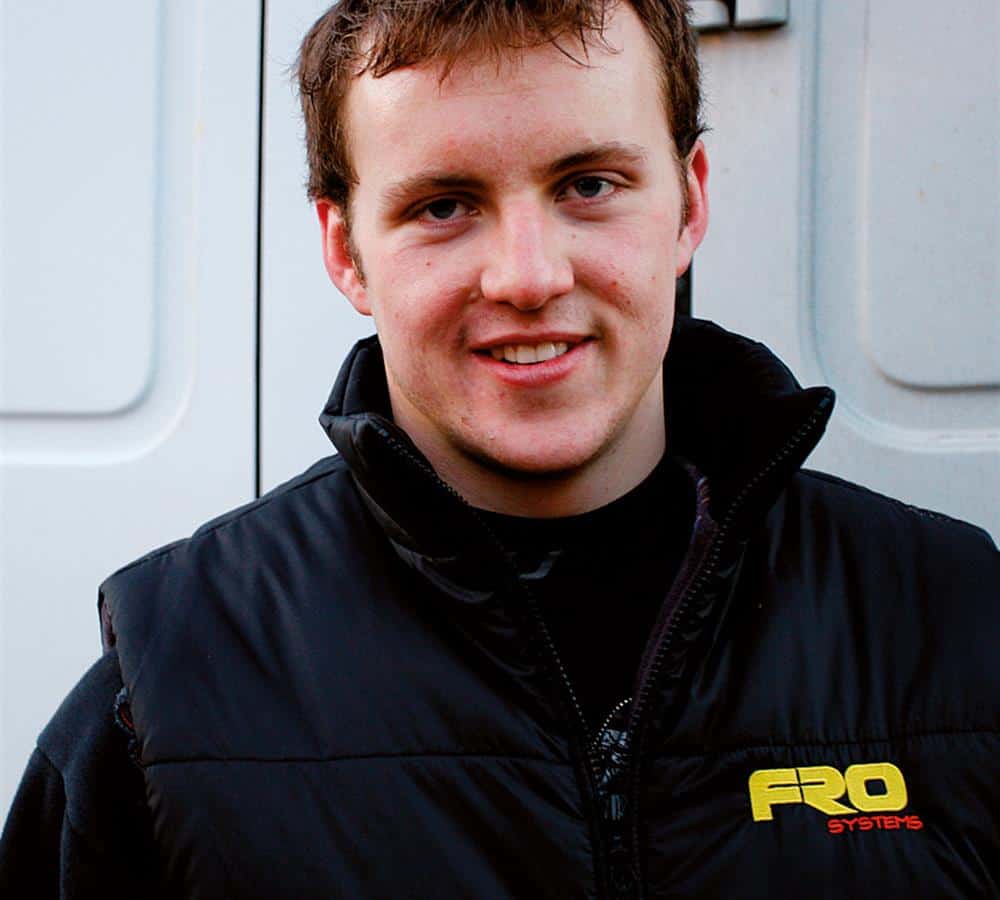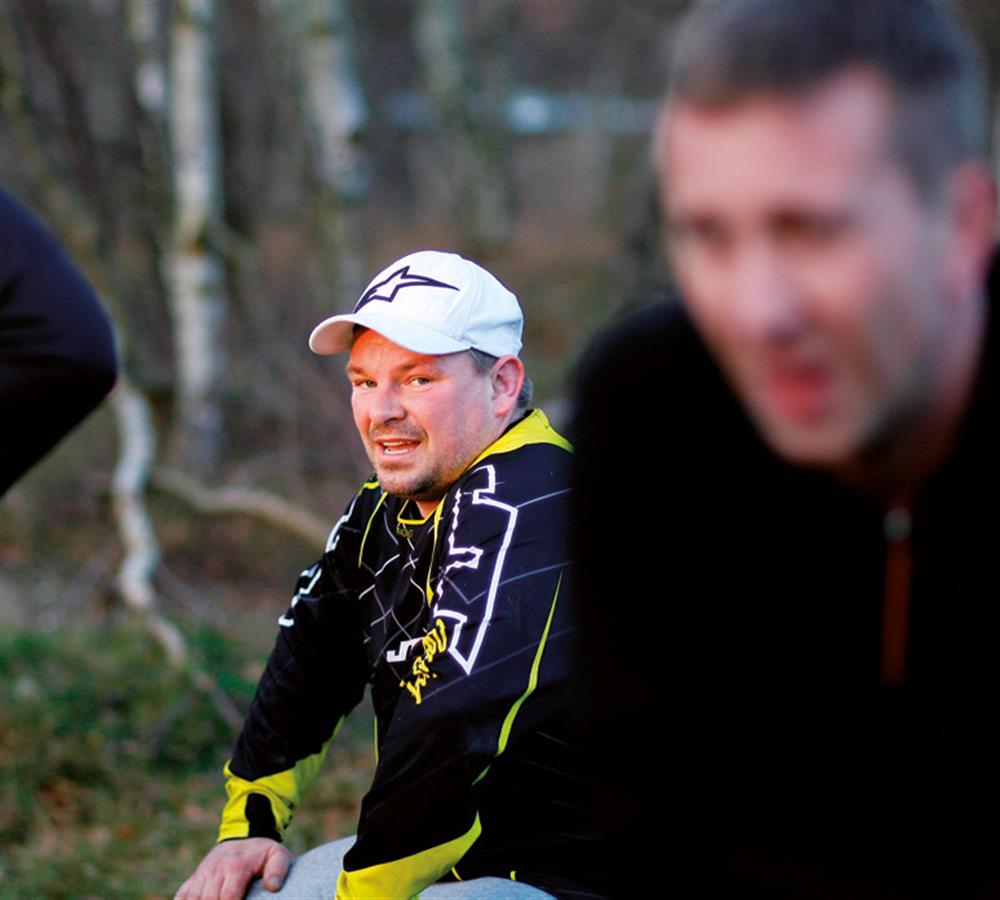Dirtbiking is one energetic sport. But so many of us simply wing it when it comes to being fit enough to really enjoy it… and to do it properly. The Dr Shox Boot Camps aim to bring our fitness, and our riding, up to scratch…
How’s that New Year’s resolution coming along? Y’know, you promised yourself that this was the year that you’d definitely get into shape. Whaddya mean you forgot all about it/haven’t had time/the dog ate your homework..? The start of the competition season is creeping ever closer so if you’re wanting to be that bit leaner and meaner there’s no time like the present.
Look around any enduro or rally paddock and the 40-something rider will see himself reflected so many times over. Underneath the bright clothing and the grid-iron body armour, hiding behind the reflective lenses of our goggles, we’re just not as young as we used to be. Not as fit and quite possibly not as keen either. But we still love the sport, still yearn to improve – right up to the point where it comes to actually making an effort.
Short Sharp Shox
The Dr Shox Boot Camps certainly embrace that scenario. Doctor Shox himself, Chris ‘Kiwi’ Hockey, recently railed the sizeable berm that is the Big 4-0 and so he’s as cognizant to diminishing reserves as anyone. His Boot Camps are then focused at rekindling the enduro rider spirit in you. When you just can’t quite find the drive to get going his Boot Camp is designed to drag you, physically, into action.
‘Training is a lot of fun, I certainly find it is,’ says Kiwi. ‘But it’s getting people into doing it in the first place that is the hard part. Even when we get the guys here and we start out with the first warm-up session (either a mountain bike cycle or a run) there’s a natural reluctance to get into it. Like some of the guys who did the cycle ride with us this morning, they didn’t want to do it, they were sort of sulking. But when they were riding back alongside me they were saying “I’m pleased we did this, I feel much better for it”. That’s what boot camps are about. It’s giving you a kick up the arse to do something you can’t be bothered to do. But once you do it you’ll love it and get into it. It’s making you do something more seriously, more actively.’
Blessed Bryan
‘When it came to creating the Boot Camps the main goal was to do something different,’ continues Kiwi. ‘I’ve taught on loads of schools, I’ve been to loads of schools, and if I look back at all the schools I’ve attended since the age of seven the one that was the most fun, that gives me the biggest smile, was the original Bryan Wade school. Bryan was a top motocrosser in the 1970s and like many of us [championship class racers] he took to doing schools in his later years. I recall going to Hawkstone Park for his two-day school when I was a kid and for the first day we all thought we were going to ride our bikes… only we didn’t. Bryan had us running up and down the hill, grabbing the guy next to us and running piggyback! Some of the guys hated it but I loved it. It brought us all onto the same level, and was great fun.
‘I always thought I could mix something like that in with an enduro school. I’ve been teaching on many schools and the format is so often the same: You’re put into blocks of ability, A, B and C, and you get your own instructors and off you go to a different part of the course and do a drill. As a teacher that was getting boring – I know it’s maybe not boring for the guys when they first come, but after they’ve been a few times I’m sure it gets a bit samey for them too. So I’ve tried to replicate what I remember from the Bryan’s school here. Hopefully I’m bringing the best from what I’ve taught others, or been taught myself over the last 35 years, and putting it together in the Boot Camp.’
The clever thing about the Boot Camp is that it links the different aspects together. Physical fitness exercises, and gyms in particular, don’t immediately link themselves to riding. But by constructively linking warm-up, strength and endurance together with the riding, and then working through fitness exercises in the same location, you can better understand how to program your own activity.
Day one at the Boot Camp is a perfectly worked example. The day started with either a jog or mountain bike ride to get the blood flowing and the limbs warmed up prior to starting riding. When the riding does start it’s in sessions. To ride for 20 minutes doesn’t sound that exacting but the course (the ‘black run’ enduro loop) is so technical and physically demanding that lasting the duration is surprisingly hard work. Then comes special test training – riding to your top speed against the stopwatch. The day stretches out and slowly the riders absorb the idea of what is in effect interval training, and high intensity at that. And to finish the day there’s a 45-minute circuit training session. It’s enough to ensure a sound night’s sleep before the next day’s activities…
Wyn-ing Ways
‘The riding sessions I’ve set out for the Boot Camp relate to my time as a dedicated championship class racer’, reckons Kiwi. ‘Before enduro I’d ridden motocross for years and years, and I’d go to practice tracks and just ride around and around. It wasn’t until I rode for Husky Sport, and Mike Carter [Husky Sport’s MD] said I needed to get bike fit, that I was introduced to properly structured training. Wyn Hughes [multiple British enduro champion] would lead the training. We’d start in January by going up to Wales and devise a track and he’d say, ‘Go – in 20 minutes I’m bringing you in’. That seemed simple enough but long before the 20 minutes were up I’d be knackered and I’d be looking at him thinking “surely those 20 minutes are up”. That showed me I was unfit, really unfit. So we’d do two, three or four 20-minute sessions at Tom’s Farm, or wherever it was, and I’d be absolutely sweating buckets – and so you’d get fitter. When I could easily do the 20-minute sessions Wyn would then make me do 30-minute sessions. By that stage I was a fit man and I could go and ride the Breckland Enduro and not be tired.
‘The special test training we do here is the same. When I was with Wyn we’d get together the Husky Sport team and get the stopwatches out, make a little test and time each other. That’s not what they normally teach in schools, but the way we train as championship riders is to find a bumpy track then ride 20-minute motos, then 30 minutes motos, to get bike fit. Then get the stopwatches out and [by trying to beat the quickest time] we’d make each other fast – that’s what we do and what we’ve always done. And so with the Boot Camp I’ve kind of brought that to the public.’
And, judging by what I saw, it works. After the warm-up Kiwi sent the riders out for their first 20-minute riding session. He says he’s learnt from experience that you can’t expect a rider to stay out there for the full 20-minute session – left to their own devices they’ll come in and stand around a while. By standing at the side of the track Kiwi makes sure they do their full quota, despite some imploring looks!
Some schools might shy away from putting riders against the stopwatch for timed special tests but Kiwi says every rider he’s known has an in-built safety measure and that it’s rare for a rider to over-extend himself and crash. But at the same time they are encouraged to push closer to their limit than they would otherwise…
Less than Jake
Day two is about practicing good technique, and Kiwi, together with his regular instructors (he works with Tom Sagar, Daryl Bolter and MX GP motocrosser Jake Nicholls, among others), get the riders to practice the skills that have evaded them. That can typically mean fast cornering, or jumps, or ruts.
‘You need to learn techniques. By firing around that same corner for 45 minutes it’s the only way you’ll nail it – and with Tom’s tips, my tips and Jake’s tips that’s years and years of experience that will make sure you get it right.’
And with such high level trainers the instruction can be as technical as you like.
‘Some of the guys, they’ve been riding ten years, they’ve got their fingers on the clutch, their elbows up, they’re doing all the right things. They’re just not fit enough and not training properly. I guess the Boot Camp comes down to saying “this is how we train and this is how we ride.”
And that’s what’s so good about the Boot Camps. They’re nothing new, there is no outrageous sales pitch, no ‘get fast quick’. It’s not ‘new thinking’, it’s what training should be – guys with the experience teaching the guys without, helping them to get better, sharing what they’ve learnt.
TRAINING AND THE OLDER RIDER!
Trainer Steve Potter has worked with some big names, including former MX2 motocross world champion Ben Townley, top British MX GP racer Jake Nicholls, as well as boxers in the professional boxing leagues. He’s from the old skool, but then so are we. We’re not professional athletes, and so talk of VO2 Max tests and suchlike aren’t going to apply to us. Instead we need some straightforward guidance on getting fit…
‘We reach our prime years around 40 years old and we all want to get back on a bike,’ explains Steve. ‘And so a little fitness or a lot of fitness, either way, is a great asset and a great help in such an energetic sport. It’ll let the body last longer and be more durable in a race and will help your own physical wellbeing.
‘But where do we start? Well, as we get older things do get harder. We don’t get any better, it gets worse for us all as we go on, so any kind of gym plan is going to do you good. Get your pals onboard – motivation is probably the hardest thing to maintain so to get us to the gym, if we’ve got a few pals pushing us, that’ll help.
‘The actual workout? Well, we’re probably looking for a bit of cardio mixed with a bit of strength work. For cardio, get on a ‘spin bike’ or a running machine, I’m not saying you’ve got to pound out a marathon, just get in 20 minutes at a time. Twenty minutes makes it worthwhile, any less than that and the body doesn’t benefit. So a 20-minute run, a 20-minute cycle, you can then start involving a bit of swimming if you like. 20 minutes in the pool, it’s all cardio…
‘I’d then go to a format of exercise which is basically strengthening the muscles. Don’t think you have to go to the gym and do weights, you can do stuff in your own garage, in your own house. Press-ups, sit-ups, raises, squat thrusts, probably the program we did from school when we were kids, that in a nice little format with your pals over an hour-long session will do the trick. Warm up, a little run, jog or cycle, and then the exercises – you can get them off the internet, it hasn’t got to be rocket science, just stick to a simple regime, and make sure you do your cool-down stretches. If the average 40-year-old rider can stick to that regime that’s going to put him ahead of the man who isn’t doing it.’
HOW(UN)FIT ARE YOU?
Judging your fitness doesn’t have to involve a costly consultation at the local gym. Here are two simple checks that you can do in your own living room – just feet from your favourite armchair – to give you an instant measure.
1. Check Your BMI
Okay, the BMI (Body Mass Index) is something of a contentious issue as it can’t necessarily be reliably applied to everyone. Effectively, you’re cross-referencing your weight against your height, and the resultant ‘score’ suggests whether you’re under- or over-weight. However, an element of commonsense has to be applied because, with muscle weighing more than fat, those who are incredibly muscular (such as body builders or pro rugby players) can be incorrectly categorized as ‘obese’. Of course, if you’re honest with yourself, you’ll know whether this applies to you, and for Average Joe it’s a reasonable measure of whether you need to bulk-up, or stop eating in bulk.
So grab the bathroom scales, a pen, paper, and probably a calculator. The calculation is your weight (in kilos) divided by your height in metres squared (that’s weight / height x height). Then check your score against this chart:
BMI Classification
Under 18.5 You’re a whippet, in fact underweight.
18.5-24.9 Spot on, champ.
25-29.9 Easy on the biscuits, you’re officially overweight.
30-34.9 Call weight watchers, this is class 1 obese.
35-39.9 Call Channel 4, you’re material for prime time shock TV.
2. Simple Strength Tests
Give the missus your stopwatch, she’s going to time you… twice. Firstly, do as many push-ups as you can do in a minute. Then take a rest (as long as you need) before launching into as many sit ups as you can do in a minute.
Check your score against this chart:
Sit ups Push ups Classification
20 10 Not even sportsman, very poor
30 20 Yeah, okay, sportsman then
40 30 Good, solid clubman
50 40 Expert, but you can’t brag
60 50 You’ve just zero’d the tight check!
NB: If it helps to know, the TBM office is certainly lacking in athletes. JB checked himself on these measures to find that yes, he’s overweight and while not exactly dreadful on the strength test he’s a few ‘ups’ short of even making Sportsman. JB’s planning a year of action to try and turn this around (we’ll see how he goes…)
Core Blimey!
If you only work on one thing this year, make it your core strength – the strength of the muscles in your body’s trunk. You might pump-up your arms or thighs, but it’s core strength that will save you from an awful lot of potential injury. By keeping your trunk strong you’ll be able to maintain the standing ‘attack’ riding position all race long, allowing you to absorb those impacts and shocks as the bike bounces down the trail. With so many of us trapped behind a desk for eight hours a day, then laying across the sofa of an evening, core strength is sadly lacking in the modern western man. Check online, or get a decent book on fitness, to sort out some solid core strength exercises.
Circuit Breaker
You’ve got a group of mates together and you’re ready to do some circuit training. What to do? Here’s roughly what the Boot Camp boys did in 45 minutes:
5 mins: Warm-up – walking, jogging, side skip at intervals in a circuit
5 mins: Flexibility – arm circles, ankle rotations, hip rotations, neck stretching
25 mins: Program of sit-ups, slide sit-ups, dorsals, push-ups, V-sit crunches, squat thrusts, squats and dips, interspersed with short runs and hop-up hop-downs on tractor tyres between each exercise
5 mins: Warm-down jog, walking and skipping in a circuit
5 mins: Stretches, working on neck, shoulders, back, hamstrings, thighs, etc
Give ‘em the Boot
Three of the guys who took part in the Boot Camp share their thoughts…
Dean Goggins, 24
I’ve been riding since I was 12, but all motocross until last year. It’s nice to get to ride the enduro track here and the training at the end gives me an idea of what I’ve got to do when I get home. I’ve done a few motocross camps in Holland and they’ve included bicycle rides before to get you warmed up, but nothing like that at the end. I need to work a lot harder. I’m going to put a lot of those exercises into my training – now I’m going to hook up with my mate Lee and my brother – he’s road racing – to work on fitness together.
Steve Bryan, 45
I’ve been riding enduro for the last three years, on a KTM 250EXC. This was my first boot camp, it was fantastic, I really enjoyed it. I like all the fitness stuff anyway, but it’s a good tough bumpy track, very difficult to ride, so there’s a lot to learn on techniques. The training links up – the fitness lets me ride longer, I don’t fatigue as fast, but there’s a lot of techniques to learn which help you save energy as well.
Lee Monger, over 30
I’ve done a bit of schoolboy motocross and now a bit of enduro. The Boot Camp has been brilliant, excellent training, really hard. Riding here I’ve come to hate my bike (a motocrosser) with a passion. I need to get a proper enduro, I think. The physical fitness at the end killed me, too – it’s set alarm bells off. I can see why the other lads are so fast, it’s because they are so fit. I need to improve really…
To find out more about the DR Shox Boots Camps you can contact them at www.drshox.co.uk they do 1 and 2-day camps and they can supply bikes and equipment and are now run in conjuction with Husqvarna at http://www.offroadtryout.com/husqvarna-off-road-bookings/

